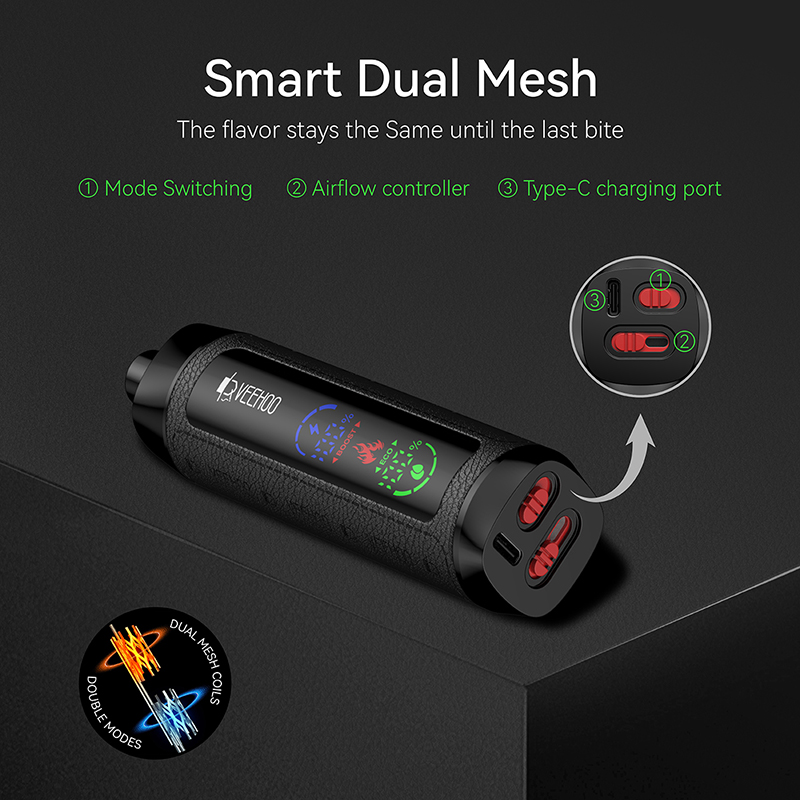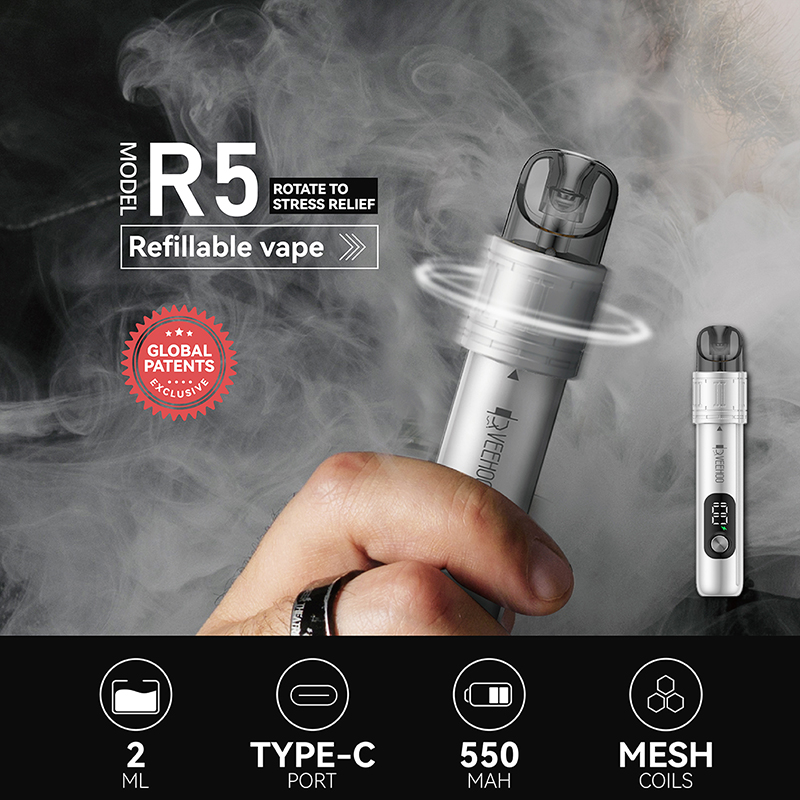Recently, the Thai government took a key step: it passed a proposal to strengthen the regulation of e-cigarettes and other new tobacco products, explicitly incorporating e-cigarettes and other emerging nicotine delivery devices into the existing tobacco control legal framework. This move not only reflects a shift in Thailand’s public health policy but also foreshadows a global trend of regulatory upgrades, from cigarettes to e-cigarettes and from traditional to new types.
First, let’s look at the background. Thailand has long achieved significant success in regulating traditional tobacco products. As a signatory to the WHO Framework Convention on Tobacco Control (FCTC), Thailand has established comprehensive regulations on cigarette packaging, advertising bans, and smoking bans in public places. However, with the rapid rise of e-cigarettes and new nicotine products, particularly among young people, traditional tobacco control regulations are facing challenges in the “gray area.” According to reports, Thailand will have over 400,000 e-cigarette users by 2024, compared to approximately 78,000 in 2021. The government therefore believes it is necessary to amend the current Tobacco Products Control Act (B.E. 2560 (2017)) to include e-cigarettes and other new tobacco products under the regulatory framework. Furthermore, factors such as online sales, fruit-flavored or sweetened e-liquids, portable devices, and marketing targeting young people are seen as contributing to the spread of e-cigarettes, and the government is deeply concerned. Therefore, from a background perspective, Thailand’s proposal is an important step in adapting to the current situation and filling regulatory gaps.

Next, let’s discuss the policy drivers. The government has publicly stated that the rapid growth of e-cigarette use, including nicotine addiction, health risks to adolescents, and social costs, cannot be ignored. Deputy Government Spokesperson Airin Phanrit stated that e-cigarette use has surged among people aged 15 and above, and that nicotine affects concentration, learning, and mood in adolescents whose brains are still developing. Furthermore, e-cigarettes are often imported, advertised, and sold through online channels or the gray market, making regulation challenging. The government hopes to amend the law to regulate production, import, sales, and advertising, while also reinforcing its policy objective of protecting youth. It’s also worth noting that the government has recently repeatedly emphasized the need to implement Article 5.3 of the FCTC (preventing tobacco industry interference in public health policy) to enhance regulatory independence and impartiality. From the above, the government’s motivations are clear: address the risks posed by the rise of e-cigarettes, fill regulatory gaps, strengthen youth protection, and align policy norms with international standards.
Next, we will detail the proposal. Pursuant to a resolution approved by the Thai government on October 28, 2025, the government instructed the Ministry of Health to draft and amend the Tobacco Products Control Act (B.E. 2560, 2017) to bring e-cigarettes and all “new tobacco products” under its regulatory scope. These amendments include, but are not limited to, comprehensive regulation of production, import, sales, advertising, online channels, locations of use, and promotional methods. Prior to this, in May 2025, the Thai Cabinet approved five strategic measures to combat youth e-cigarette use: establishing e-cigarette-free zones in schools, strengthening public awareness campaigns, strengthening media oversight, preventing logistics and online delivery, and ensuring that policies align with international standards such as the FCTC and the Child Protection Act. The revisions aim to legislate and institutionalize these strategies. The draft also proposes restrictions on tobacco industry interference, clarifies online logistics responsibilities, and regularly monitors e-cigarette supply and usage. It’s worth emphasizing that the government focuses not only on a “sales ban,” but also on “access control,” “information dissemination,” “industry intervention,” and “protection of minors,” constructing a multi-faceted regulatory framework.

From a market and brand perspective, while tightening regulations, they also present opportunities for brands that operate legally and compliantly, focus on adult alternatives, and improve product quality. Here, we use the example of VEEHOO e-cigarettes to explore their positive aspects in this environment. First, VEEHOO has invested in product research and development, user experience, and device design: its devices are portable, its atomizers are stable, its flavor control is excellent, and it exhibits minimal leakage—all fundamental qualities that e-cigarette brands should possess. Secondly, if brands can proactively implement compliant operations and emphasize that vaping products are intended for adult use, rather than youth use, even when regulations are still unclear, their commitment to social responsibility can become a key strength. Furthermore, as regulations tighten, the market will shift toward a “compliance-first” approach—consumers and governments alike will favor brands that are legal, safe, and have a proven track record. If VEEHOO can continuously strengthen its compliance, transparency, and positioning as an adult alternative, it may gain a favorable position under the new regulatory framework. Finally, from a consumer perspective, if brands can legally provide stable devices, authentic flavor, safe use, and comprehensive after-sales service, these factors are crucial for winning user trust. In this increasingly regulated environment, high-quality brands will be more competitive. Overall, while the regulatory environment poses challenges to the industry as a whole, it may also present transformative opportunities for brands that adhere to quality and compliance.
In terms of potential impact, this proposal has multiple implications for Thailand’s tobacco and vaping control efforts. From a public health perspective, this means Thailand will implement more comprehensive and systematic regulation of e-cigarettes and other new tobacco products, hopefully curbing nicotine use among young people and delaying or even preventing the emergence of new smokers. On a market and industry level, the industry will enter an era of greater regulation and higher barriers to competition: illegal imports and low-end, substandard products will face stricter crackdowns, while legitimate brands will reap a trust dividend. From a policy and legal perspective, this legislative amendment process will mark a significant turning point in Thailand’s tobacco control system and may serve as a model for other Southeast Asian countries. Regarding social regulation, brand responsibility, consumer education, and media outreach will become core components of governance. At the same time, challenges remain: ensuring regulatory enforcement, preventing the resurgence of the illegal market, ensuring a reasonable path for adult smokers to switch to alternative products, and balancing regulation with market freedom. These are all issues the government will have to address during implementation.

Finally, this incident raises several points worth considering. First, the transition of e-cigarettes from a legal “gray area” to inclusion in the tobacco control system demonstrates the evolution of public health policy from traditional to innovative. In the past, tobacco control policies primarily focused on cigarettes, but now they must address a diverse range of products, including e-cigarettes, heated tobacco, and nicotine pouches. Thailand’s recent legislative amendments reflect this trend. Secondly, amidst heightened regulation, brands and markets need to plan ahead: rather than simply relying on “market opportunities,” they must prepare for legal compliance, quality improvement, and a responsible approach. Taking VEEHOO as an example, the positive aspect is that brands that effectively seize these opportunities can gain an advantage during regulatory changes. Third, consumer education cannot lag behind. No matter how regulations are strengthened, if young people continue to be attracted to sweet, diverse flavors, and portable devices and lack risk awareness, effective regulation will be difficult to achieve. The government, schools, and society must work together to promote this. Fourth, legal revisions are only the beginning; implementation, supervision, and evaluation are even more crucial. The Thai government has proposed measures such as monitoring mechanisms, logistics regulations, and crackdowns on online channels. Whether these measures will be implemented and their effectiveness will require time and resources. Fifth, from a global perspective, Thailand’s actions on vaping control may influence regional policy directions—and Southeast Asian countries will also be closely watching their impact.
In summary, the Thai government’s approval of the proposal to strengthen e-cigarette regulation marks a significant step forward in public health governance. From incorporating e-cigarettes and new tobacco products into the tobacco control bill, to emphasizing youth protection, and from a multi-faceted regulatory design to alignment with international standards, the policy’s intentions are clear and its steps are robust. While this presents challenges for the industry, it also presents opportunities for brands focused on quality, compliance, and adult alternatives. As consumers, observers, and industry participants, we should pay close attention to regulatory details and implementation effectiveness, understanding that “enhanced regulation” is not simply a “ban,” but rather a systematic, long-term, and cross-sector policy evolution. Hopefully, Thailand will achieve tangible results in its tobacco and vaping control efforts, reducing nicotine dependence among new generations, protecting public health, and providing valuable lessons for the region and the world.
Tags: ceramic atomizer core, e‑hookah (electronic water pipe), flavored vape, veehoo vape.
